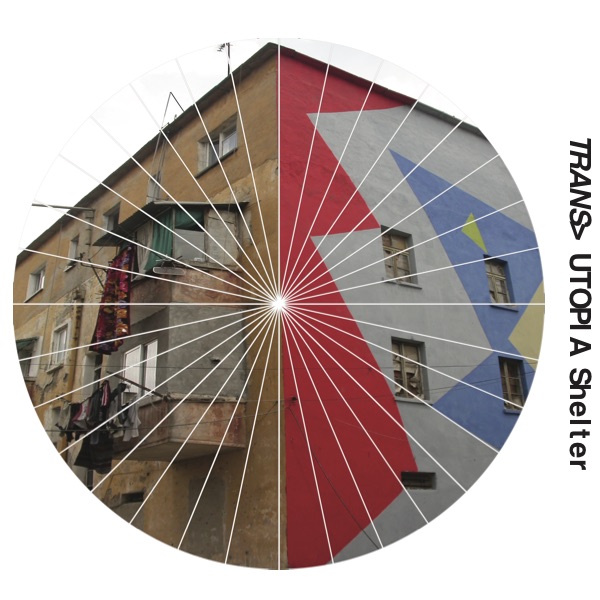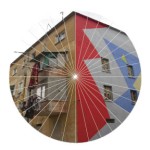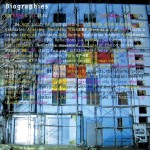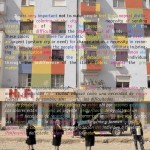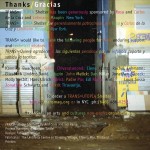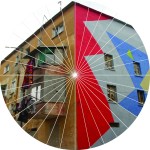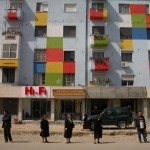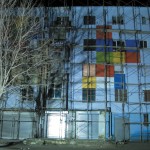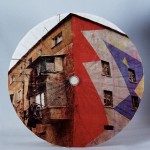@Utopia Station at 50th International
Art Exhibition – La Biennale di Venezia and @TRANS>area, New York
EDI RAMA b. 04.07.64
ANRI SALA b. 10.07.74
Anri paints his first painting, a still-life @Edi’s home Edi graduates, Academy Fine Arts, Tirana there as a prof., Edi starts a lecture series on Forbidden Arts during Totalitarian Regime; Anri attends while in high school Reflections a political performance supporting student’s democratic movement, Edi one of the organizers, Anri attends Edi starts two year artists-in-residence program, Paris Anri continues his art studies, Paris Roomates, Rue du Faubourg, St. Antoine Edi’s political stance causes his near death by a masked man while a short visit, Tirana Edi is Minister of Culture Edi is elected Mayor Tirana Among other city projects, the coloring project starts, aimed @ categorical changes 03 Feb. In Utopia station Meeting, Poughkeepsie, Anri shows colored areas in the city footage; March a conversation @ Kunsthalle, Vienna with Edi and Anri, June hoping to punctuate the world with hope and the opening up to change, the TRANS> Utopia Shelter by Anri and Edi will have its first stop @ UtopiaStation, Venice
It was very important not to make people feel their normal disillusionment. The coloring of the city began as a necessity of sending strong signals of change to the people, regardless of the unconquerable difficulties and the objective lack of funds and means. These colors are not there for aesthetic reasons. The colors are there as an urgent cry for change and as a necessity in reconciling the outdoors with the people inside. The colors facilitate in bringing communication among the people and in making time a common element in a city that reflects the long debasement of the individual through the indifference of the state. Colors against the gray matter.
Edi and Anri in conversation
General Statement for The Utopia Station: Curated by Molly Nesbit, Hans Ulrich Obrist and Rirkrit Tiravanija
“Today the world is too dangerous for anything less than utopia,” Buckminster Fuller once wrote. Unfortunately because this remains true, we propose to travel together as a group and meet at the “Utopia Station”. The Utopia Station in Venice will be nothing more or nothing less than a way station, a place to stop, to look, to talk and refresh the route. Utopia itself, an idea with a long history and many fixed ideologies, has loosened up to become a catalyst now, or the no-place it always was, a hope for the better future.
Physically the Utopia Station in Venice will come together around the work of 61 artists and architects who will build small structures, models and walls. Around them, other small objects and projects, including drawings, small paintings and photographs, will be set up in a free arrangement that takes its inspiration from the legendary Hannover Merzbau of Kurt Schwitters. An open call has gone out to almost 200 artists for posters, which will add another layer of activity swarming in the space and also beyond it, scattering individually into the city of Venice. The Utopia Station is designed to hold the work of many artists from around the world. To list them all is not possible here. Let us say simply that it is a large, and growing, group. The alphabetical order would begin with A12 and end with Andrea Zittel.
Throughout the summer of 2003 in Venice, different speakers, writers, dancers, performers and musicians will be invited to give Utopia its ideas, radical actions and sounds. The Utopia Station project as a whole should be understood as the composite of its many layers, each of which is unfolding at different speeds in different times and places: seminars, meetings, stations, posters, performances and books are coming en route. We imagine the Station filling with layers of life in this way and in ways that will be invented spontaneously over the course of the exhibition.
The Utopia Station in Venice will be the first major stop. We envision a project that will extend over the next several years.
Molly Nesbit, Hans Ulrich Obrist and Rirkrit Tiravanija
By using the umbrellas in Venice and then scattering them around the world, the public will participate in the many layers of the Utopia Station in Venice and beyond.
TRANS> Utopia Shelter has been generously sponsored by Rosa and Carlos de la Cruz, Lehmann Maupin, New York and Daniel and Mirella Levinas.
TRANS> would like to thank the following people for their enduring support and technical wisdom: Luc Barnier, Ariane Beyn, Liria Begeja, Erika Biddle, Alexia Boro, Kannika Buacheen, Sylvia Chivaratanond, Rosa de la Cruz, Liam Gillick, Olivier Goinard,Francesca Grassi, Ilene Kurtz, Rachel Lehmann, Matteo Liguigli, Elizabeth Linden, Gerald Malt, David Maupin, John Melick, Dan Miller, Isabela Mora, Jonathan Napack, Molly Nesbit, Hans Ulrich Obrist, Vladimir Perisic, Padre Pio, Edi Rama, Yasmil Raymond, Anri Sala, Louis Sossa, Jonathan Schwartz and Rirkrit Tiravanija.
TRANS> Utopia Shelter: by Anri Sala and Edi Rama
Project manager: Alexandra Tuttle
Design: Fabian Monsalve
Fabricator: The Umbrella Centre in Borsang Village, Chiang Mai, Thailand
Printer: Cinnamon Graphics, New York
ANRI SALA, an Albanian artist living in Paris, has gained international attention for his video, animation and photographic works. With an emphasis on slowness, stillness, and intimate detail, Sala explores the interface of documentary and fiction. His painterly works elicit an undercurrent of tension that speaks to political and social realities, articulating loss and alienation through a specificity of place and cultural context that seems rooted in memory and history.
Anri Sala was born in 1974 in Tirana, Albania. He studied painting at the National Academy of Arts in Tirana, video at the Ecole Nationale Supérieure des Arts Décoratifs in Paris and film directing at Le Fresnoy – Studio National des Arts Contemporains – in Tourcoing, France. In 2001 he received the Young Artist Prize of the 49th Venice Biennale. His works have been widely shown internationally, at institutions including MAMCO, Geneva, Switzerland; Dallas Museum of Art, Texas; Ikon Gallery, Birmingham, England; Kunsthalle Wien, Vienna: ARC, Musée d’Art Moderne de la Ville de Paris, and the New Museum of Contemporary Art, New York, among others. He participated in Utopia Station at the 50th Venice Biennale; the 24th Bienal de Sao Paolo; Manifesta 4 in Frankfurt, Germany and Uniform: Order and Disorder at P.S.1 Center for Contemporary Art, New York.
Anri Sala lives and works in Paris.
EDI RAMA was born in 1964 in Tirana, Albania, back then until 1991 the capital of the isolated and stalinist Socialist People’s Republic of Albania. He studied painting at the Academy of Fine Arts and moved in the early 1990ies to Paris, where he collaborated on some projects with Albanian artist and friend Anri Sala. At the same time he was very active in the first movements for democracy in Albania. In 1998 he became Minister for Culture, Youth and Sports. After a period as Mayor of Tirana he became in 2013 Prime Minister of Albania.
As an artist he works mostly with highly personal sketches and drawings on notebooks and in his calendars.


